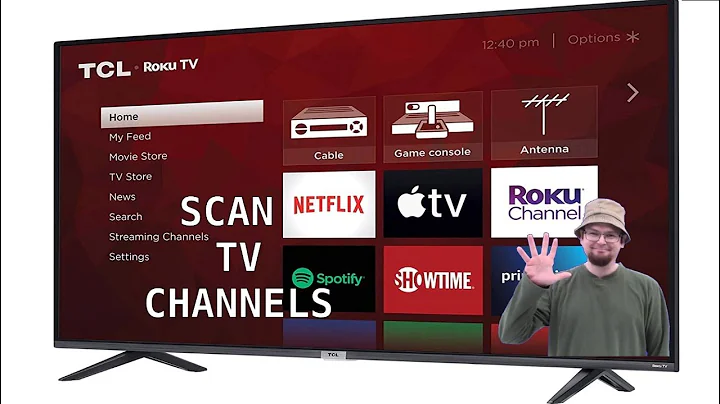The Quick and Easy Way to Livestream Quest 2 Gameplay to Twitch or YouTube
Table of Contents:
- Introduction
- The importance of streaming Quest 2 gameplay
- Requirements for streaming
- Streaming Quest 2 Gameplay to Twitch or YouTube
- Step 1: Ensure you have a Quest 2 and a laptop/PC
- Step 2: Access Oculus Casting
- Step 3: Initiate casting from Quest 2 to computer
- Step 4: Adjust casting settings
- Step 5: Use the Quest 2's microphone for streaming
- Step 6: Set up streaming software (e.g., OBS)
- Streaming or Capturing PC VR Gameplay
- Alternative method for capturing PC VR gameplay
- Using Oculus Mirror to capture what you see in the headset
- Adjusting Oculus Mirror settings for stabilization
- Conclusion
- Importance of high-quality captures in VR content creation
- Benefits of recording directly to the headset
🎮 Streaming Quest 2 Gameplay to Twitch or YouTube
Streaming your Oculus Quest 2 gameplay to platforms like Twitch or YouTube opens up opportunities for sharing your experiences and engaging with a wider audience. While the process may seem complicated, it is relatively straightforward with the right setup and software. In this article, we will guide you through the step-by-step process of streaming your Quest 2 gameplay, highlighting the necessary requirements and settings to optimize your streaming experience.
Step 1: Ensure you have a Quest 2 and a laptop/PC
To begin streaming, you'll need the key components: the Oculus Quest 2 headset and a laptop or PC. The Quest 2 allows for seamless streaming, while a computer serves as the intermediary between the headset and the streaming platform.
Step 2: Access Oculus Casting
Open a browser window on your computer and navigate to oculus.com/casting. Log in to your Oculus account to proceed. This webpage will be used in conjunction with your Quest 2 headset to initiate the streaming process.
Step 3: Initiate casting from Quest 2 to computer
Put on your Quest 2 headset, turn it on, and have your desired game queued up and ready to play. Press the Oculus button on your right controller, and select the Camera icon, followed by Cast, and then Computer. Click "Next" to establish the connection between your Quest 2 and computer. This will begin casting what you see in the headset to your computer screen.
Step 4: Adjust casting settings
Before you start streaming, explore the available options to customize your casting experience. By default, casting is set to a 1:1 aspect ratio, but if you prefer widescreen, simply toggle the option in the settings menu. Additionally, you can expand the casting window to full screen and control the game audio through the speaker icon. If you don't have an external microphone, enable the Quest 2's built-in microphone for capturing your voice while streaming.
Step 5: Use the Quest 2's microphone for streaming
Utilizing the Quest 2's internal microphone is a convenient option if you don't have a separate microphone. While it may not provide the highest audio quality, it allows you to effectively communicate with your viewers without additional setup.
Step 6: Set up streaming software (e.g., OBS)
Open your preferred streaming software, such as OBS (Open Broadcaster Software), and configure it to capture the Oculus Mirror window. Ensure that your software also captures any additional elements required for your stream, such as an external camera capturing your physical movements.
With your streaming software appropriately set up, you are ready to start streaming your Quest 2 gameplay to popular platforms like Twitch or YouTube. Explore the variety of features and options within your chosen software to personalize your stream and engage your audience.
🖥️ Streaming or Capturing PC VR Gameplay
While the previous section focused on streaming Quest 2 gameplay, there is another important aspect to consider: streaming or capturing PC VR gameplay. This section will introduce an alternative method for capturing PC VR gameplay using Oculus Mirror.
When using streaming software like OBS, capturing the monitor window displaying your PC VR gameplay is the typical approach. However, capturing specific gameplay elements, such as performance overlays or Oculus Debug tool settings, requires a different method. Oculus Mirror, an application included with the Oculus PC app, allows you to mirror and capture precisely what you see in your headset.
To access Oculus Mirror, navigate to File Explorer and follow the path C:// drive > Program Files > Oculus > Support > Oculus-diagnostics. Open Oculus Mirror to reveal a blank window. For Oculus Mirror to display content, you must have Quest Link enabled, connecting your Quest 2 to your PC for PC VR gameplay.
To enter full-screen mode in Oculus Mirror, click anywhere within the window and select Settings > Fullscreen. This ensures a seamless mirrored experience between your headset and your PC screen, simplifying the capturing process.
For enhanced viewing quality, Oculus Mirror offers image stabilization options. Enable Image Stabilization by clicking on Settings, then selecting Image Stabilization and enabling it. Fine-tune the parameters by choosing from pre-set options like Wide, Narrow, or Mild stabilization. Experiment with different settings to strike a balance between stabilizing head movements and maintaining an optimal field of view.
Once you have configured Oculus Mirror and your streaming software, you can start capturing or streaming high-quality PC VR gameplay. Utilize the advanced capturing capabilities to provide viewers with a smooth and immersive VR experience.
🔎 Conclusion
As a VR content creator, achieving high-quality captures is essential for producing exceptional videos. Whether you are streaming Quest 2 gameplay or capturing PC VR experiences, optimizing your setup and settings ensures an engaging and visually impressive result. By following the steps outlined in this article, you can confidently share your gaming adventures with the world, allowing others to experience the wonders of virtual reality alongside you.
Highlights:
- Learn how to stream your Oculus Quest 2 gameplay to Twitch and YouTube effortlessly.
- Optimize your casting settings for the best streaming experience.
- Explore alternative methods for streaming PC VR gameplay, including capturing specific gameplay elements and utilizing Oculus Mirror.
- Enhance VR content creation by capturing high-quality footage directly to your Quest 2 headset.
- Engage your viewers with personalized streaming software settings and microphone options.
FAQ
Q: Can I stream Quest 2 gameplay directly from the headset?
A: No, currently, streaming to Twitch or YouTube from the Quest 2 itself is not supported. You'll need to connect your Quest 2 to a laptop or PC for streaming.
Q: Are there any additional requirements for streaming Quest 2 gameplay?
A: To stream Quest 2 gameplay, ensure you have a stable internet connection, a Quest 2 headset, and a computer capable of running the necessary streaming software.
Q: Can I use a separate microphone for streaming Quest 2 gameplay?
A: Yes, you can use an external microphone if you prefer higher audio quality. However, the Quest 2's built-in microphone is a convenient option for capturing your voice while streaming.
Q: What software can I use for streaming Quest 2 gameplay?
A: Popular streaming software like OBS (Open Broadcaster Software) is commonly used for streaming Quest 2 gameplay. However, feel free to explore different software options based on your preferences and requirements.
Q: Can Oculus Mirror be used for capturing PC VR gameplay on other headsets?
A: Oculus Mirror is specifically designed for capturing Oculus gameplay. For capturing PC VR gameplay on other headsets, refer to the respective headset's software and documentation.
Q: What are the benefits of capturing gameplay directly to the Quest 2 headset?
A: Recording directly to the headset ensures the highest quality captures for standalone Quest 2 gameplay. This method eliminates any potential loss in video quality due to streaming or external capture devices.
Resources:







